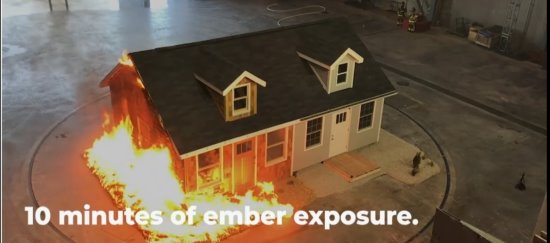
| ||||||
According to a March 22 staff report by Moraga Planning Director Afshan Hamid and Associate Planner Brian Horn, an MOFD report to its board of directors stated, "The proposed amendments are the product of a yearlong effort carried out by all of the Fire Marshals in Contra Costa County meeting as part of the Contra Costa County Fire Chiefs Association Fire Prevention Officers Committee. The Fire Marshal working group worked to create a consensus on amendments to adequately protect each community and create a standardized template for a county-wide fire code."
MOFD Chief Dave Winnacker's presentation during the council meeting helped to explain the local amendments while clarifying that they don't potentially affect current homeowners or renters, but serve as a go-forward for new construction.
A summary of local amendments to the 2022 Fire Code include: adding clarity in identifying when operational and construction permits are required; amending and clarifying language for substantial addition and alteration with regards to linear walls and roofs or if the aggregate of the new construction exceeds 3,600 square feet, and removing Exterior Hazard Abatement requirements.
Emergency Planning and Preparedness amendments added nuisance fire alarms, aerial pre-plans, and amended standby personnel as well as added access to open space, existing fire trails maintenance requirements, and language for Knox Box content requirements. (A Knox Box is a secure key safe that mounts on the wall of a building with the key available to open the box being in possession of the fire company.)
Spark arrestor requirements for chimneys were also added as well as amending definitions for substantial additions and alterations to existing structures such as requiring fire sprinklers in certain cases, and added an exit discharge surface requirement so there is an uninterrupted flow to leave (i.e. no large rocks underfoot) for people from certain occupancies who will be exiting outdoors during an emergency. Changes also amended monitoring of alarm systems to comply with NFPA 72 (National Fire Protection Association Signaling Code).
Other amendments to the fire code addressed hazardous materials storage and removal, such as explosives, fireworks, and flammable cryogenic fluids.
The chapter on Safety During Construction and Demolition added site safety plan and site security requirements, along with asbestos removal requirements.
Chapter 80, Appendix C, amended requirements for the number and spacing of hydrants and added maximum distance for hydrant locations, while Appendix D amended access and loading requirements; amended D103.2 to bring fire department turnarounds up to compliance with the 2019 fire code (28-feet width of new roads); amended grade and angles approach, dead end fire apparatus turnarounds, and aerial access requirements; and added the number of fire apparatus access roads for new developments.
Winnacker also mentioned real property sales and transfers. The 2019 code amendment requires a certificate of compliance with exterior hazard abatement requirements prior to real property sale or transfer. MOFD has engaged in collaboration with the Contra Costa County Realtors Association to increase awareness of fire code requirements and develop implementation measures. Work can be done in advance of the sale and can be self-reported; and who does the work can be negotiated between the buyer and the seller. The work can be deferred with an escrow account. Any sales between May 1 and Nov. 30 have 30 days following the sale or transfer to complete the required abatement. Sales between Dec. 1 and April 30 have to complete required abatement no later than the annual May 31 compliance date.
MOFD's 2019 abatement code for Existing Parcels and Structures will move the annual compliance date from June 15 to May 31 and extend the abatement period from 10 to 15 days. It bans the use of combustible ground cover (including mulch) within two feet of structures; and requires at least a two-foot air gap between the ground and vegetation within two feet of structures. The clearance for trees will increase from five feet to six feet; require the removal of Eucalyptus and Monterey pine within six feet of structures; require the removal of Juniper and Bamboo within 10 feet of a road by the end of 2023; and require an exterior fire hazard inspection for real property transfers.
Reach the reporter at:
